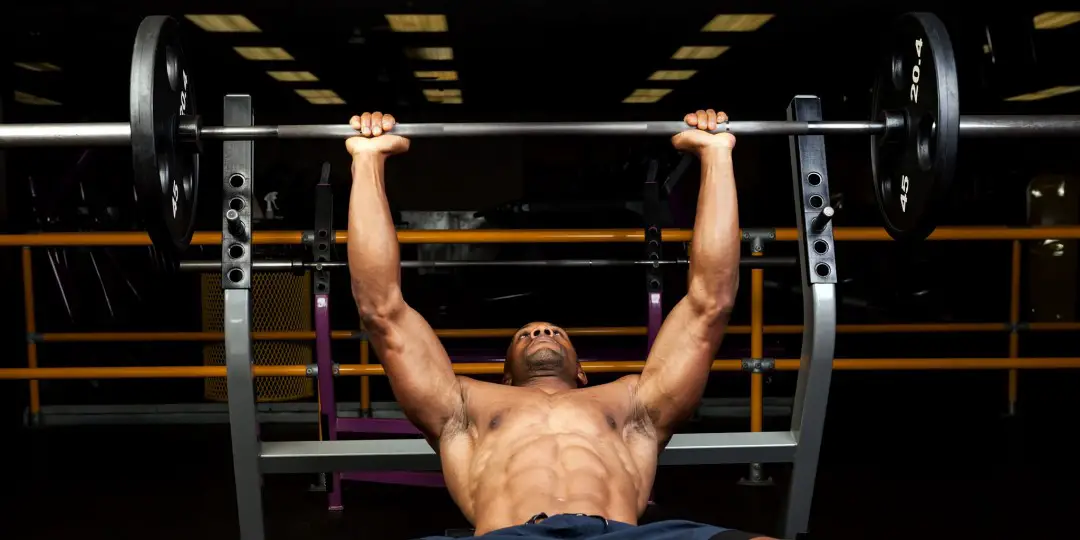The flat barbell bench press is the unparalleled granddaddy of all exercises. In fact, it is a handy tool for enhancing upper body muscles and strength. Much like squats that also strengthens the leg muscles, bench presses are really that phenomenal.
Others can attempt to replicate this fantastic invention, but they can’t measure up to the sheer brutality of its variation.
Even then, a close relative to the flat bench is the incline bench barbell press. Although you may know the straightforward difference of placing a bit more stress on the upper region, you may never know how it compares to the incline version as an overall chest builder, as well as the actual differences in their efficiencies, angle of stress, and mechanics.
Flat bench barbell press
As a result of its popularity, this version of the barbell does not require a formal introduction. In fact, It’s among the very first exercise done on Mondays around the globe.
Flat bench chest press – step by step:
Make sure you support your neck and head by lying down on the flat bench. Place your feet on the floor while your knees should be at a 90-degree angle. Whenever your back comes off the bench, consider placing your feet on top of the bench rather than on the floor.
Breathe out and squeeze your core before you begin to push the barbell off the rack, as well as up to the ceiling with your pectoral muscles.
Breath in and lower the barbell slowly towards your chest. It will take you at least twice the time required to bring down the barbell relative to during push up.
Return back to your initial position using your pec muscles. Repeat 12 times before you add more weight.
Pros.
The flat bench press will boost your body strength and mass significantly, and it’s one of the top upper body multi-joint movements. Also, it utilizes most of the muscle tissues from the shoulders, pecs, as well as triceps, thus an efficient and effective exercise.
Cons.
The flat bench press can turn out to be a devil in disguise when done improperly. Excessive weight, contortionist back, and a loose form can spell injury.
Incline bench barbell press.
This version is a challenging as well as a far more difficult move for most and mostly reserved for upper pec work. The incline press is often relegated as a secondary exercise and can do a great job in packing the upper chest mass.
Incline chest press, step by step:
Sit on an incline bench and lie back. Ensure the bench is adjusted to an inclination of roughly 15-30 degrees. Your grip must be at the position where your elbows make around a 90-degree angle.
Use the shoulder-width grip to wrap your fingers around the bar. Lift the bar from the rack and then hold it above your while your arms remain locked.
While you inhale, come down until the bar is close to your chest. Your arms must remain tucked into your sides and at a 45-degree angle.
Maintain this position for some few seconds and breathe out once, then push the bar back up to your initial position. Then lock your arms, hold on a bit, and come down.
Repeat the above steps 12 times before
Pros.
When performed in the right way, the incline press can place a significant stretch on the upper pec region with less weight lifting as compared to the flat bench version.
A comprehensive chest program which comprises the inline press will do a fantastic job in shoring-up any weakness on the upper chest area that is often neglected on various physiques.
Cons.
Too much weight used can be harmful to your gains and increases the risk of potential injury as well as subsequent burnout.
Another possible mistake when performing the incline press result from the use of a short range of motion. When the bar is stopped halfway, or even several inches down, you neglect the all too critical muscle tissue stretches.
More stretch requires more contraction and thus, spells more strength and mass. To see better results, use a full range of motion and less weight.
Safety Precaution
Whenever you use dumbbells, ensure that you do not drop them down to your side after you have used them. It’s hazardous to your rotator cuff as will to individuals around you.
Given that you can’t access a spotter to take the weights away, just place the dumbbells close to your chest before you do a crunch to raise yourself up to a seated position. Then place the dumbbells down on the floor.
Also, use a spotter if you are an amateur at this exercise. However, if you cannot find a spotter, please be careful with amount of weight you use.
The final verdict.
Although these two exercises have similarities in their execution, they have some substantial differences in their effects. Even though deadlift exercises tend to be advanced, this particular training can be placed in the same category because it’s advanced, too.
With common sense, you would conclude that the incline version stresses the upper area and the flat version would stress the lower as well as the middle portions of the pecs.
Well, the fact is that they do stress the respective parts of the chest; nevertheless, they both stress the whole area to some degree.
The best way out is to combine both versions in your program, and this will slowly but undeniably balance out your chest and shore-up your weakness for a completely proportioned upper body.
you place the bar back on the rack.

